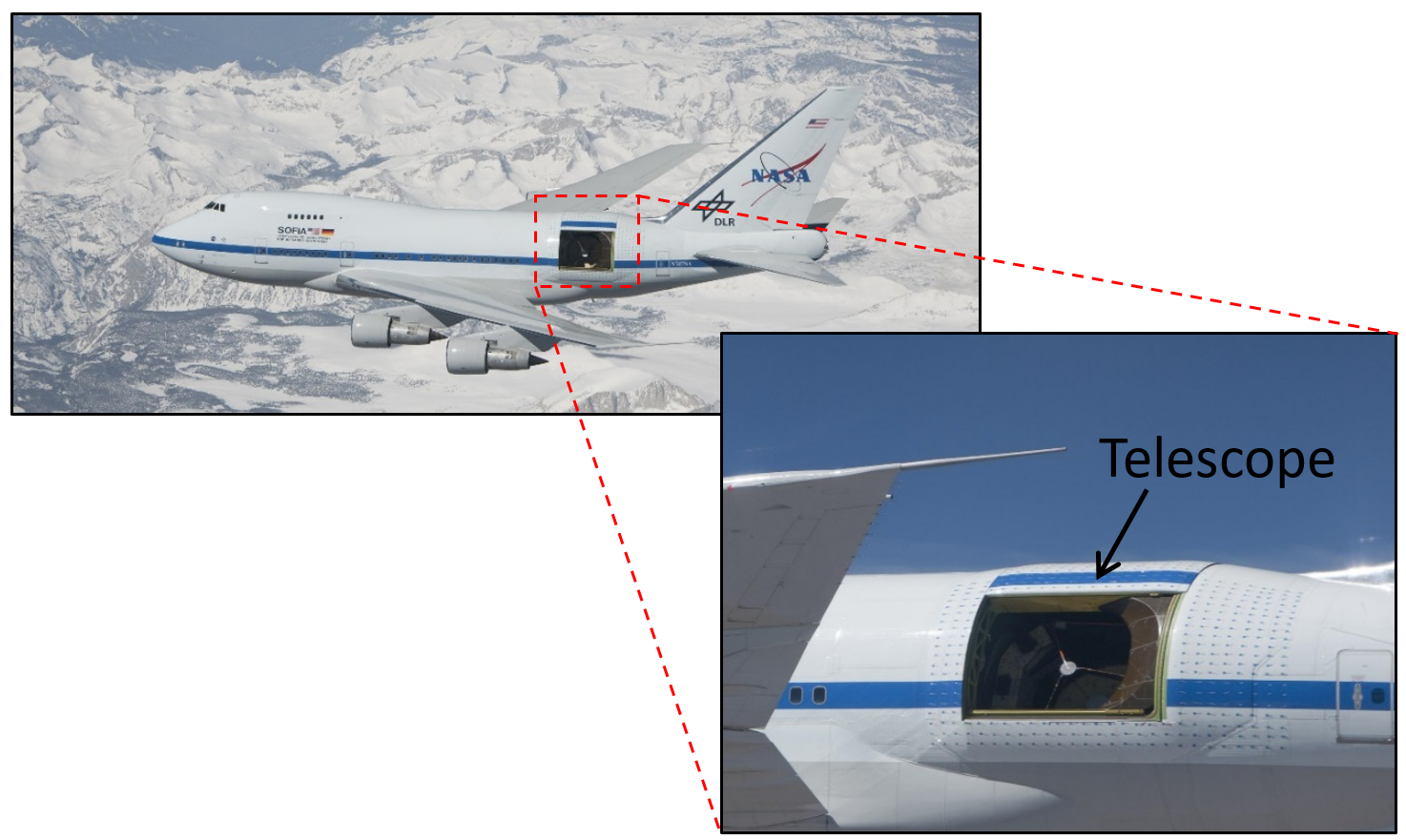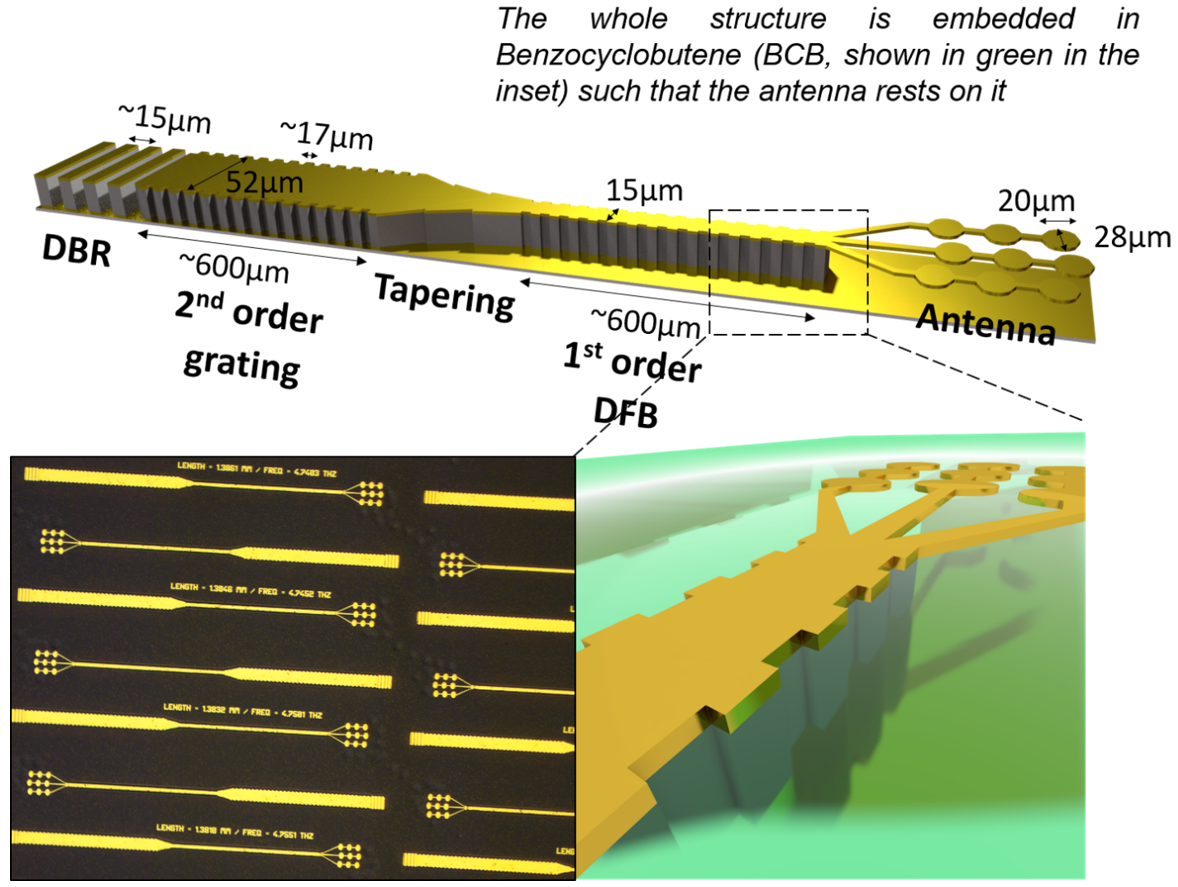QCLs for Astrophysical Applications
QCLs for Astrophysical Applications
The conditions and impact of star formation are central to a number of cosmic phenomena (galaxy dynamics, formation of planets, production of heavy elements), the understanding of which is of fundamental importance in astrophysical research. Probing physical quantities of interstellar gas and molecular clouds using atomic and molecular transitions can offer information on their local density, temperature and velocity field, providing hints to long-standing questions in astrophysics.
The heterodyne spectrometer GREAT (German REceiver for Astronomy at Terahertz Frequency) aboard SOFIA (Stratospheric Observatory For Infrared Astronomy) aircraft [1] has the possibility of performing measurements on several astrophysical lines situated in the terahertz region.
The frequencies of most interest are 4.745 THz (63μm), where the spectral fine structure line of Oxygen [OI] is situated [2], as well as the spectral lines in the 1.8-2.1 THz range, including singly ionized carbon [CII] fine structure line (1.9THz) and neutral oxygen [OI] line (2.06THz).
Due to their reliability and compactness, as well as power, polarization and spectral properties, QCLs represent excellent candidates to act as local oscillators in heterodyne measurements in several such spectroscopy setups and the collaboration with University of Cologne on this topic in the framework of external pageSFB956 projectcall_made has already been developing in the last few years.
The “Rocket Laser”
A number of criteria have to be met by the local oscillator to be mounted in the 4.7 THz setup and used aboard SOFIA during the flight: single mode at 4.745 THz, tunable in frequency by about ±2GHz, high emitted power (above 1mW) in continuous wave operation, Gaussian-shaped far field pattern of the emitted radiation, low power dissipation.
The latest and most performant device employed for this endeavor follows a design we call the “Rocket Laser” [4]. It is based on BCB (Benzocyclobutene) technology and fulfills all the requirements, consisting of the following features:
- A broadband DBR, acting as a highly reflective cavity mirror
- A second order lateral grating as the main section of the amplification section. The grating increases the losses of higher order transversal modes and promotes the fundamental one.
- A multisection taper which further filters the fundamental mode and couples to the front mirror.
- A first order DFB, acting as the second cavity mirror. The shallow refractive index contrast narrows the reflectivity band and selects the longitudinal lasing mode.
- A patch array antenna for surface emission. It rests on the BCB polymer which surrounds the rest of the device.
With such a design, we were able to fabricate, measure and deliver devices to be used in the upGREAT setup aboard SOFIA - the lasers having already been employed as a local oscillator in several flight campaigns.
References
[1] S. Heyminck, U. U. Graf, R. Güsten, J. Stutzki, H. W. Hübers, and P. Hartogh. “GREAT: the SOFIA high-frequency heterodyne instrument”. Astron. Astrophys.,542:L1 (2012)
[2] R. T. Boreiko, A.L. Betz. “Heterodyne Spectroscopy of the 63 micron O I Line in M42”. ApJ 464, L83-L86 (1996)
[3] M. Justen, K. Ohtani, D. Turcinkova, F. Castellano, M. Beck, U.U. Graf, D. Buchel, M. Schultz, J. Faist. “Waveguide Embedding of a Double-Metal 1.9-THz Quantum Cascade Laser: Design, Manufacturing, and Results”. IEEE Trans. Terahertz Sci. Technol. 7(5), pp.609-613 (2017)
[4] L. Bosco, C. Bonzon, K. Ohtani, M. Justen, M. Beck, J. Faist. “A patch-array antenna single-mode low electrical dissipation continuous wave terahertz quantum cascade laser”. Appl.Phys.Lett. 109, 201103 (2016)


